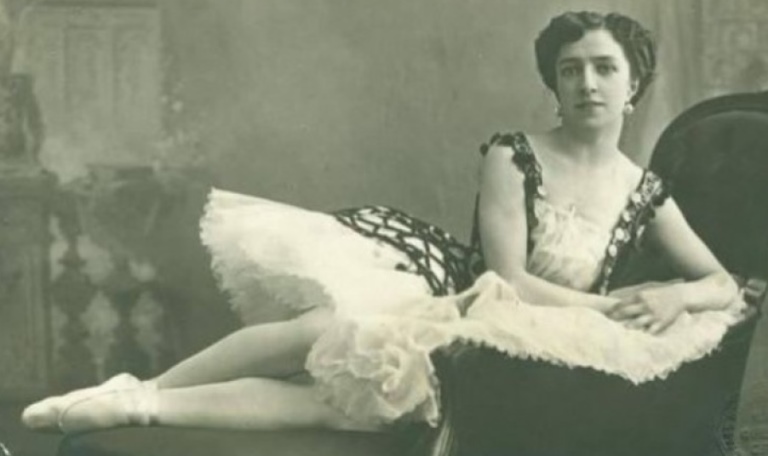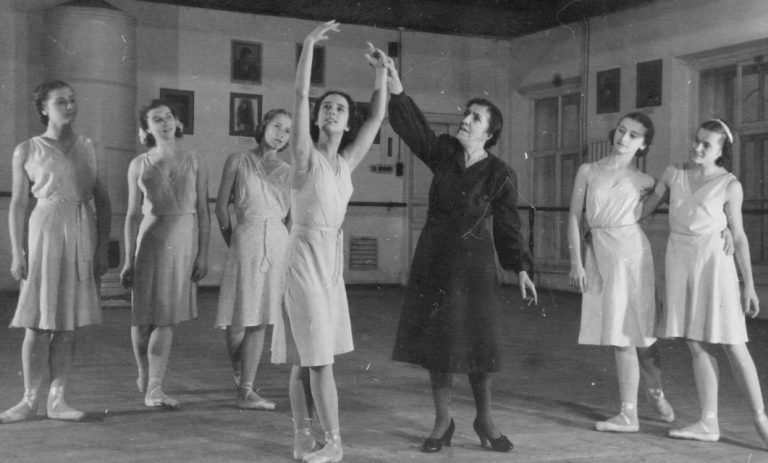Agrippina Vaganova is the author of Russian classical ballet theory, a ballerina overcoming the shortcomings in her physique, and a teacher of excellent dancers.
Many of her students described her flair as she simply knew everything about the human body and had a fantastic brain. And they would go as far as referring to her as the Michelangelo of ballet.
Table of Contents
Agrippina Vaganova’s Biography
- Birth Name: Agrippina Yakovlevna Vaganova
- Born: June 26th, 1879
- Died: November 5th, 1951
- Nationality: Russia
- Parents: Akop Vaganov & a Russian mother
- Siblings: Two older sisters
- Spouse: N/A
- Height: N/A, but small stature
Early Life
Agrippina Yakovlevna Vaganova was born to an Armenian family with parents and two older sisters. The living conditions of the family weren’t comfortable and they had to struggle quite a bit.
In St. Petersburg, her father worked as an usher for the famous Mariinsky Theatre, which gave Vaganova early exposure to ballet.
At 8 years old, the Imperial Ballet School accepted Vaganova and put her under the wings of some of the most renowned names among contemporary dancers.
Unlike a lot of ballet legends, Vaganova didn’t have an easy start with ballet. Her willpower was the force pushing her through the challenge instead of her natural gifts.
After graduating, she was accepted into the Imperial Ballet as a reward for the extra efforts she poured into her practice.
The Way To Become A Professional Ballet Dancer & Teacher
As a ballerina
Vaganova didn’t have the most ideal beginning in ballet. She was shorter than the standard, but her limbs were stronger and heavier.
Not to mention, she was surrounded by talented and traditionally perfect competitors: Anna Pavlova, Olga Preobrajenska, and Tamara Karsavina.
The critics were merciless to Vaganova when she started her professional career. Maestro Petipa wrote about her as “dreadful” and “awful” every time he mentioned her performances and stated that he wouldn’t go to her ballet.
More than anyone, Vaganova was aware of her disadvantages and chose to make use of the cards dealt to her.
It didn’t take her too long to become a soloist with highly skilled technique and exceptional virtuosity. People recognized her as the “Queen of Variations” due to her excellence in varied and short dances as well as her soaring leaps.
In 1915, Vaganova was promoted to be a Prima Ballerina with an outstanding performance in The Talisman, which was a grand creation of Petipa, ironically enough.
As a teacher
Most dancers who earned the Prima promotion would dive into the next glorious phase of their career without a second thought, yet Vaganova decided to retire only one year after her promotion and focused on being a great teacher.
From 1916, Vaganova taught classes at Akim Volynsky’s School of the Baltic Fleet and changed to Choreographic College in 1921. It was a whole new chapter in her life because she might have been well-known as a ballerina but her achievement as a teacher was what made her a legend.
Having struggled to decipher and grasp ballet techniques herself, Vaganova knew how to overcome challenges better and what to teach younger dancers better than anyone else.
Her deep interest in teaching was also the motive leading to Fundamentals of Classical Dance, a seminal book written by Vaganova. Here, she tried to show ballet teachers what they should be teaching their students and gained so much respect for her methods.
Throughout her time as a director, she continued with classes and only retired shortly before her death.
As an Artistic Director
The October Revolution put ballet under a grim prospect because it had always been viewed as a form of court entertainment. “I fought tooth and nail”, said Vaganova herself, to retain the Imperial Ballet as well as the monumental legacy of Petipa.
She was the artistic director of the Kirov Ballet from 1931 to 1937 and had several remarkable works, such as her staged Swan Lake (1933) and partially choreographed La Esmeralda (1935).
During this phase, she co-established a pedagogic department at the Leningrad Conservatory with Boris Shavrov, the purpose of which was to train ballet teachers and not only dancers.
Contribution To Ballet – The Vaganova Method
The difficulties she had to face as a dance student and a new performer. The Agrippina Vaganova technique we know today came from her recognition of the lack of a method in Russian ballet.
The essence of her teaching put a strong emphasis on the harmony among all body parts, especially the line from neck to spine. Therefore, Vaganova and her students seemed so effortless in maintaining stability.
From another perspective, one can describe the Vaganova method as a harmonized combination of the athleticism present in the Soviet Union, the graceful arm movements in the old Russian ballet, the intricate footwork by the Italians, and the overall elegant French styles.
Does it seem ambitious of Vaganova? Yes.
Did she succeed? Also yes.
The Soviet Union had many exceptional dancers such as Galina Ulanova, Marina Semenova, or Alla Osipenko. A lot of them learned from Vaganova as well as trained under her guidance.
It was not amazing performances on stage that turned Vaganova into the greatest contributor to Russian ballet in the 20th century, but the method was named after her. It created a new basis for the nation’s contemporary ballet and gradually impacted other dance styles.
The Vaganova method is the quintessence of what we now call modern Russian ballet. It is a fundamental method for training in European dance schools and also has a certain impact on Chinese schools.
In recent years, a few ballet schools in the United States have incorporated this method into their teaching programs.
Death & Legacy
Vaganova passed away on November 1, 1951. She is honored and remembered as the greatest teacher of Russian ballet rather than a Prima Ballerina, and it might well be what she would like to be remembered as.
In 1957, The Leningrad Choreographic School had its name changed to The Vaganova School as a means to honor its iconic teacher. A few years later, it was titled as an academy and known as such from then.
Dancer students tend to call her Professor Vaganova rather than any other title. If you visit the academy named after her, you will find her sculpture right at the entrance.
Her published book survived six reissues and was translated into many languages. After almost a century, it is still a priceless guide for those who want to teach or learn ballet.
Final Words
Despite being a highly ranked and accomplished ballerina, Agrippina Vaganova is often mentioned as a teacher with vision and creativity so much more often.
Without her, Russian ballet might have had to wait indefinitely for a revival. As Maya Plisetskaya herself once said, there was no second Vaganova then, and even now.

